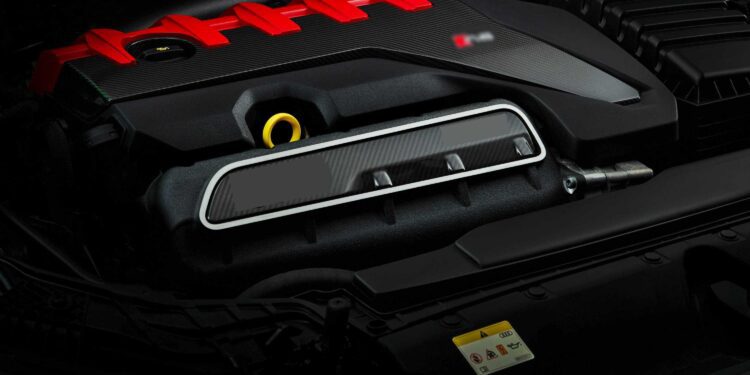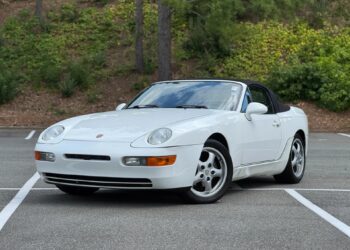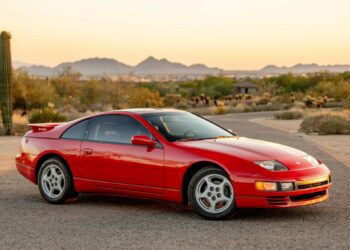Today, most automakers are ditching character in favor of compliance as performance cars are increasingly leaning into downsizing, hybrid tech, synthetic soundtracks, and overboosted four-bangers. But one German brand is still flying the flag high when it comes to five-pot motors. Audi’s 2025 RS3 is the last car you can buy new in the U.S. with the a five-cylinder engine.
Since this marks the end of an era, we need to look back at how the format has evolved over the decades and what makes it so significant. Now, if we look back at history, Audi didn’t just stumble upon the successful five-cylinder formula by accident. Its story can be traced back to the late ‘70s with the Audi 100 5E, but the moment that matters most is 1980, because that’s when Audi unleashed the now legendary Quattro.

Boxy, turbocharged, and running a weird-sounding inline-five, the original Quattro became the stuff of WRC legend thanks to its all-wheel drive system, with rally icons like Walter Röhrl helping cement its legacy. By the mid-80s, this thing was tearing up the Monte Carlo Rally while much of the competition was still figuring out how to maintain traction in the wet.
In the years since, Audi has not only retained and refined the five-cylinder formula, but has also used it to separate its RS lineup from the rest of the lineup. But why a five-cylinder in the first place, you may ask? It’s smaller and lighter than most sixes, compact, easier to package up front, but crucially, it has a broad torque band. Also, the uneven cylinder configuration and unique 1-2-4-5-3 firing order give it a distintive soundtrack.
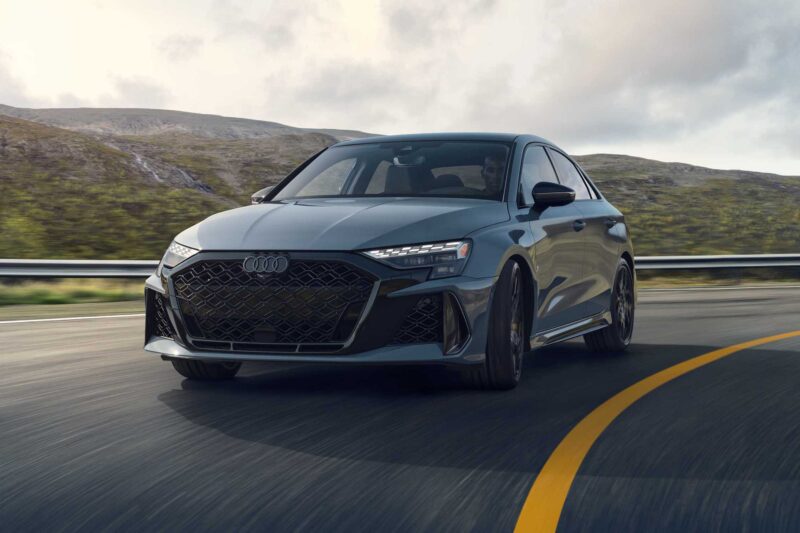
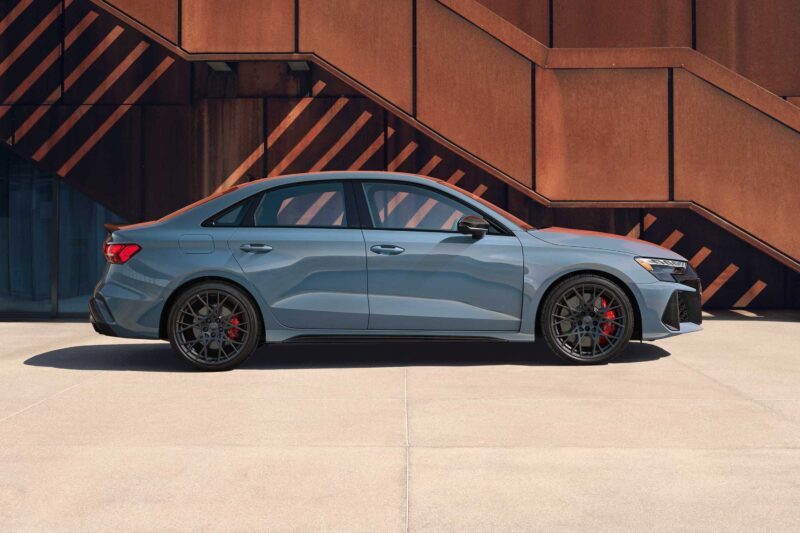
The 2025 Audi RS3 packs a punchy 2.5-liter turbocharged inline-five that produces 394 horsepower and 369 pound-feet of torque. It’s paired to a seven-speed dual-clutch automatic, sending power to all four wheels through Audi’s Quattro system. Is it quick? Sure. Try 0 to 60 mph in 3.3 seconds, 155 mph top speed (upto 180 mph when equipped with Dynamic plus package).
Equipped with the RS Torque Splitter and RS sport suspension plusIt managed to get around the Nurburgring-Nordschleife with 7:33.123 minutes and yet it’s livable, because you can daily this compact sports sedan, owing its four doors, trunk space, heated seats, and adaptive cruise. It’s impressive how much performance is baked into a car so compact.
Coming to exterior embellishments, Audi hasn’t reinvented the RS3, but it has refined the formula. The revised front bumper, and blacked out larger grille have been reworked for better air flow. You also get Audi’s signature Matrix LED headlights. The rear now sports trick OLED taillights with customizable patterns. Kyalami Green, and Arkona white are stock colors, but more Audi Exclusive shades, are also available. Forged 10-spoke 19-inch wheels inspired by Audi’s RS lineup drop unsprung weight and look properly aggressive.
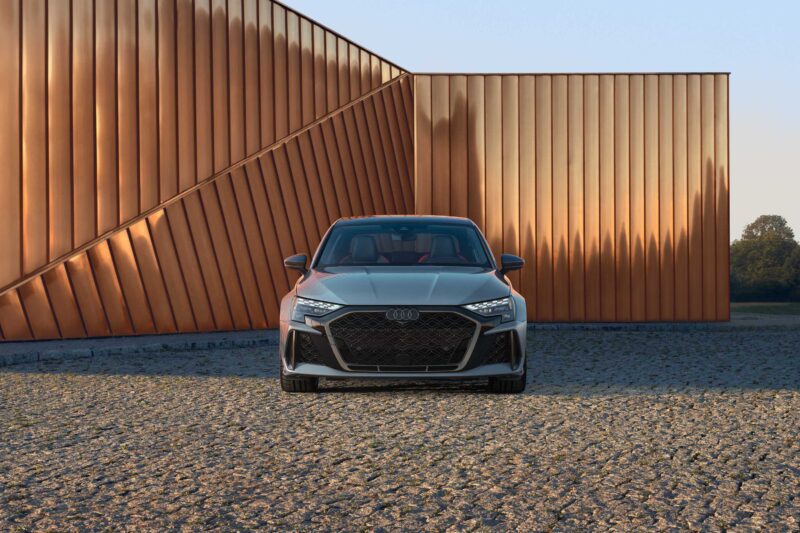
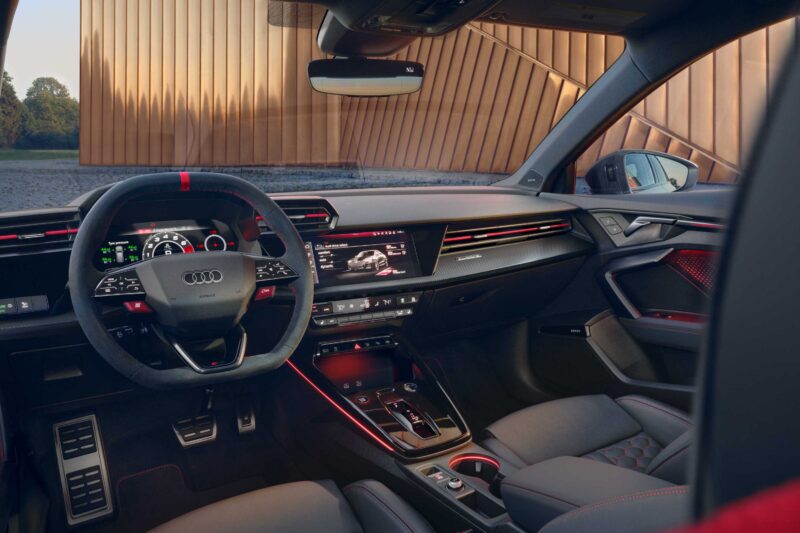
Inside, it’s the same playbook: Nappa leather sport seats with hexagonal quilting, RS digital cockpit, carbon trim, and physical buttons where they matter. Flat-bottom steering wheel, aluminum paddles, and a gear selector that feels like a shifter even if it isn’t.
The RS3’s list of real rivals is short. You’ve got the beefy 2025 BMW M2 that packs 453 horsepower form a 3.0-liter and a proper manual (something we wish the Audi had as well). While the Beemer will be more fun on a track, it likely won’t match the RS3’s traction and year-round usability. The Mercedes-AMG CLA 45 S meanwhile packs 416 horsepower from its 2.0-liter turbo-four.
With a starting MSRP of around $63,400, Audi’s entry-level RS model certainly isn’t affordable. A host of performance and visual upgrades could push that number even higher. But having said that, the RS3 also isn’t boring, for the reasons stated above. The five-cylinder represents a piece of Audi legacy, and the RS3 is the last new car you can buy in America with this configuration and that alone makes it special. So act fast until stocks last if seek to go down the new car route.
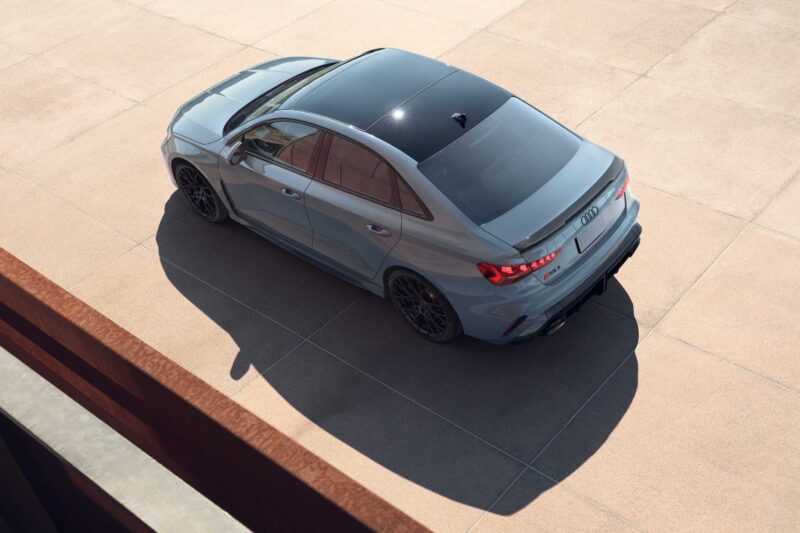
Images Source: Audi

